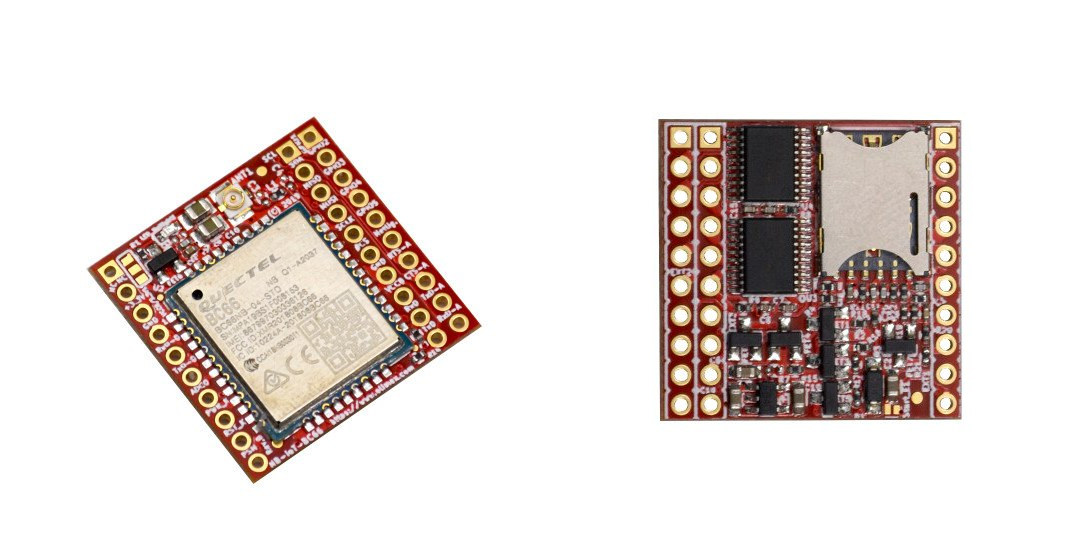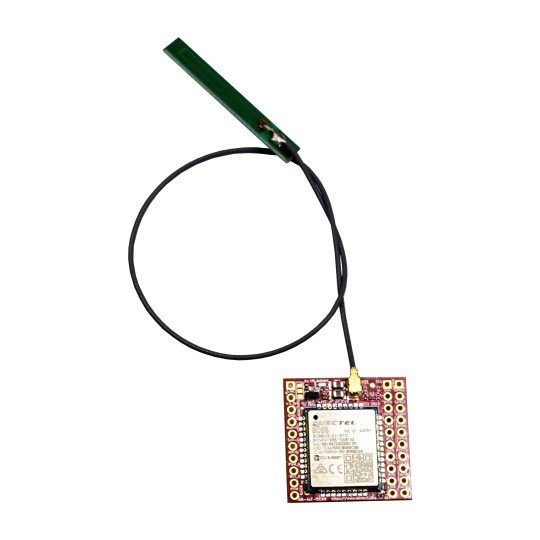Quectel BC66 NB-IoT module is found on a few development boards such as Olimex NB-IoT DevKit, works worldwide – at least where NB-IoT networks are deployed -, and can be programmed with Arduino or PlatformIO.
Olimex has now designed a breakout board fitted with Quectel BC66 module for people wanting a smaller footprint (26x26mm) and/or integrate the module easily with their own hardware.

Olimex BC66 breakout board’s features and specifications:
- NB-IoT Connectivity
- Quectel BC-66 with worldwide GSM bands coverage
- 25.5 kbps uplink and downlink
- nano SIM card slot
- u.FL antenna connector + optional antenna
- I/O Expansion – 3x 10-pin header either unpopulated or fitted with male headers; Level shifters for 5x GPIOs, I2C, SPI, UART
- Misc – Status LEDs
- Power Supply –
- Dimensions – 26×26 mm
As with other LPWAN modules, this module/board would typically be found in remote electricity, water and gas meters, smart city (parking/lighting) management systems, healthcare patient monitoring, smart farming applications, industrial monitoring and control and so on. Contrary to LoRaWAN, you have to rely on network operators to provide connectivity and cannot setup your own private network, but costs are usually low (a few dollars per year or even less), and in most cases, coverage is much better.

- NB-IoT-BC66 board only – 13.50 Euros
- NB-IoT-BC66-ANT board with cellular antenna – 14.50 Euros
- NB-IoT-BC66H board with male headers – 14.50 Euros
- NB-IoT-BC66H-ANT board with make headers and cellular antenna – 15.50 Euros
You can purchase the breakout board and find hardware and software documentation on Olimex website.

Jean-Luc started CNX Software in 2010 as a part-time endeavor, before quitting his job as a software engineering manager, and starting to write daily news, and reviews full time later in 2011.
Support CNX Software! Donate via cryptocurrencies, become a Patron on Patreon, or purchase goods on Amazon or Aliexpress





Is it breadboard friendly with 2.54mm pin spacing?
It’s 26x26mm and has row of 10 holes along one side, that suggests 2.54mm hole spacing (trust me I’m a mechanical engineer, finally a question I can answer 😉 )
What I don’t understand is if this tecnology need a custom SIM, my country TLCs have no idea on what NB-IOT is.
I’ve creaded my own adapter board 2 years ago. But My module does not find any signal.
The same adpter with a SIM800 work perfectly. So the issue can be the NB-IOT module itself or the tecnology in my region that is loked down in some sort of way.
Customer SIM cards are typically not allowed to connect to the cellular network via NB-IoT/LTE-M. My local provider in Switzerland requires a M2M contract to connect to the NB-IoT/LTE-M network. Note that it is not yet possible to connect via roaming with NB-IoT until Cat NB2 is deployed.
It’s because NB-IoT authenticates in a different way to the network
Not every telecommunications operator provides NB-IoT service. Then if your operator provides NB-IoT service, you must call the company, to give u NB-IoT provided sim card, which means a sim card that is allowed to access the NB-IoT network.
Has anyone used the BC66 with a hologram.io SIM in the US? Does it work with t-mobile?
I can’t comment on the situation in the US. But I did try Hologram SIM card in Thailand with an NB-IoT board, and I was told it would not work because the NB-IoT network did not implement roaming. I have no problem using the card with 2G to 4G. So I think the key for Hologram SIM card to work is that the network operator implements NB-IoT roaming (TBC).